PEIYING ZHU, SENIOR VICE PRESIDENT OF WIRELESS RESEARCH, HUAWEI (11 Apr, 11:45 CST)
Title: Continuous Innovation of Wireless Networks for an Intelligent and Sustainable Future
Abstract:
With the fast-growing number of 5G networks and subscribers, 5G is driving the rapid growth of mobile data traffic with exciting new applications and enhanced user experiences. At the same time, 5G is slowly being adopted by vertical industries. Thousands of projects are being set up for testing and verifications, indicating the growing adaptations of 5G for industries in the near future. These activities are driving the continuous enhancements of the 5G network for new and expanded use cases. 5G advanced is being standardized to meet the growing needs for the next few years. Meanwhile, industries and researchers are looking further for the next decade in both new services and breakthrough technologies.
In this talk, a roadmap toward 2030 will be discussed based on our learning from 5G deployment, society’s needs, and future technology trends. The future wireless network will not only be an intelligent network, with autonomous management and learning capabilities but also serve as a key platform to enable distributed and collaborative learning and inference with sensing capability.
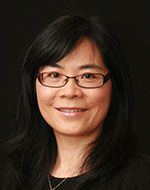 Bio: Dr. Peiying Zhu, Senior Vice President of Wireless Research, is a Huawei Fellow, IEEE Fellow, and Fellow of the Canadian Academy of Engineering. She is currently leading 5G and beyond wireless research and standardization in Huawei. The focus of her research is advanced radio access technologies. She is actively involved in 3GPP and IEEE 802 standards development. She has been regularly giving talks and panel discussions on 5G vision and enabling technologies. She led the team to contribute significantly to 5G technologies.
Bio: Dr. Peiying Zhu, Senior Vice President of Wireless Research, is a Huawei Fellow, IEEE Fellow, and Fellow of the Canadian Academy of Engineering. She is currently leading 5G and beyond wireless research and standardization in Huawei. The focus of her research is advanced radio access technologies. She is actively involved in 3GPP and IEEE 802 standards development. She has been regularly giving talks and panel discussions on 5G vision and enabling technologies. She led the team to contribute significantly to 5G technologies.
Prior to joining Huawei in 2009, Peiying was a Nortel Fellow and Director of Advanced Wireless Access Technology in the Nortel Wireless Technology Lab. She led the team and pioneered research and prototyping on MIMO-OFDM and Multi-hop relay. Many of these technologies developed by the team have been adopted into LTE standards and 4G products. Dr. Zhu has more than 200 granted patents.
MEROUANE DEBBAH, CHIEF RESEARCHER, ARTIFICIAL INTELLIGENCE AND TELECOM SYSTEM RESEARCH CENTRE, TECHNOLOGY INNOVATION INSTITUTE (11 Apr, 09:15 CST)
Title: Rebuilding the Theoretical Foundations of Communications and Computing
Abstract: We are arriving at the end of an era that has guided the ICT for the last century. Quite remarkably, many of the remarkable engineering breakthroughs in Communication (the famous “G” era) and Computing (the famous “Moore’s” era) were based on quite old Basics. Indeed, the Nyquist Sampling theorem dates back to 1924, the Shannon’s Law to 1948, and the Von Neumann Architecture to 1946. Today, we are desperately lacking guidance for new engineering solutions as we have approached those limits and there is a need for the whole industry to take its share of responsibility by re-investing massively in the fundamentals to revive a new century of engineering progress. In this talk, we will re-discuss the assumptions made a century ago and provide a research roadmap showcasing the fundamental role of Mathematics and Physics to unlock the theoretical barriers.
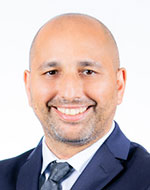 Bio: Mérouane Debbah is Chief Researcher at the Technology Innovation Institute in Abu Dhabi. He is an Adjunct Professor with the Department of Machine Learning at the Mohamed Bin Zayed University of Artificial Intelligence. He received the M.Sc. and Ph.D. degrees from the Ecole Normale Supérieure Paris-Saclay, France. He was with Motorola Labs, Saclay, France, from 1999 to 2002, and also with the Vienna Research Center for Telecommunications, Vienna, Austria, until 2003. From 2003 to 2007, he was an Assistant Professor with the Mobile Communications Department, Institut Eurecom, Sophia Antipolis, France. In 2007, he was appointed Full Professor at CentraleSupelec, Gif-sur-Yvette, France. From 2007 to 2014, he was the Director of the Alcatel-Lucent Chair on Flexible Radio. From 2014 to 2021, he was Vice-President of the Huawei France Research Center. He was jointly the director of the Mathematical and Algorithmic Sciences Lab as well as the director of the Lagrange Mathematical and Computing Research Center. Since 2021, he is leading the AI & Telecom Systems center at the Technology Innovation Institute. He has managed 8 EU projects and more than 24 national and international projects. His research interests lie in fundamental mathematics, algorithms, statistics, information, and communication sciences research. He is an IEEE Fellow, a WWRF Fellow, a Eurasip Fellow, an AAIA Fellow, an Institut Louis Bachelier Fellow, and a Membre émérite SEE. He was a recipient of the ERC Grant MORE (Advanced Mathematical Tools for Complex Network Engineering) from 2012 to 2017. He was a recipient of the Mario Boella award in 2005, the IEEE Glavieux Prize Award in 2011, the Qualcomm Innovation Prize Award in 2012, the 2019 IEEE Radio Communications Committee Technical Recognition Award, and the 2020 SEE Blondel Medal. He received more than 20 best paper awards, among which the 2007 IEEE GLOBECOM Best Paper Award, the Wi-Opt 2009 Best Paper Award, the 2010 Newcom++ Best Paper Award, the WUN CogCom Best Paper 2012 and 2013 Award, the 2014 WCNC Best Paper Award, the 2015 ICC Best Paper Award, the 2015 IEEE Communications Society Leonard G. Abraham Prize, the 2015 IEEE Communications Society Fred W. Ellersick Prize, the 2016 IEEE Communications Society Best Tutorial Paper Award, the 2016 European Wireless Best Paper Award, the 2017 Eurasip Best Paper Award, the 2018 IEEE Marconi Prize Paper Award, the 2019 IEEE Communications Society Young Author Best Paper Award, the 2021 Eurasip Best Paper Award, the 2021 IEEE Marconi Prize Paper Award as well as the Valuetools 2007, Valuetools 2008, CrownCom 2009, Valuetools 2012, SAM 2014, and 2017 IEEE Sweden VT-COM-IT Joint Chapter best student paper awards. He is an Associate Editor-in-Chief of the journal Random Matrix: Theory and Applications. He was an Associate Area Editor and Senior Area Editor of the IEEE TRANSACTIONS ON SIGNAL PROCESSING from 2011 to 2013 and from 2013 to 2014, respectively. From 2021 to 2022, he serves as an IEEE Signal Processing Society Distinguished Industry Speaker.
Bio: Mérouane Debbah is Chief Researcher at the Technology Innovation Institute in Abu Dhabi. He is an Adjunct Professor with the Department of Machine Learning at the Mohamed Bin Zayed University of Artificial Intelligence. He received the M.Sc. and Ph.D. degrees from the Ecole Normale Supérieure Paris-Saclay, France. He was with Motorola Labs, Saclay, France, from 1999 to 2002, and also with the Vienna Research Center for Telecommunications, Vienna, Austria, until 2003. From 2003 to 2007, he was an Assistant Professor with the Mobile Communications Department, Institut Eurecom, Sophia Antipolis, France. In 2007, he was appointed Full Professor at CentraleSupelec, Gif-sur-Yvette, France. From 2007 to 2014, he was the Director of the Alcatel-Lucent Chair on Flexible Radio. From 2014 to 2021, he was Vice-President of the Huawei France Research Center. He was jointly the director of the Mathematical and Algorithmic Sciences Lab as well as the director of the Lagrange Mathematical and Computing Research Center. Since 2021, he is leading the AI & Telecom Systems center at the Technology Innovation Institute. He has managed 8 EU projects and more than 24 national and international projects. His research interests lie in fundamental mathematics, algorithms, statistics, information, and communication sciences research. He is an IEEE Fellow, a WWRF Fellow, a Eurasip Fellow, an AAIA Fellow, an Institut Louis Bachelier Fellow, and a Membre émérite SEE. He was a recipient of the ERC Grant MORE (Advanced Mathematical Tools for Complex Network Engineering) from 2012 to 2017. He was a recipient of the Mario Boella award in 2005, the IEEE Glavieux Prize Award in 2011, the Qualcomm Innovation Prize Award in 2012, the 2019 IEEE Radio Communications Committee Technical Recognition Award, and the 2020 SEE Blondel Medal. He received more than 20 best paper awards, among which the 2007 IEEE GLOBECOM Best Paper Award, the Wi-Opt 2009 Best Paper Award, the 2010 Newcom++ Best Paper Award, the WUN CogCom Best Paper 2012 and 2013 Award, the 2014 WCNC Best Paper Award, the 2015 ICC Best Paper Award, the 2015 IEEE Communications Society Leonard G. Abraham Prize, the 2015 IEEE Communications Society Fred W. Ellersick Prize, the 2016 IEEE Communications Society Best Tutorial Paper Award, the 2016 European Wireless Best Paper Award, the 2017 Eurasip Best Paper Award, the 2018 IEEE Marconi Prize Paper Award, the 2019 IEEE Communications Society Young Author Best Paper Award, the 2021 Eurasip Best Paper Award, the 2021 IEEE Marconi Prize Paper Award as well as the Valuetools 2007, Valuetools 2008, CrownCom 2009, Valuetools 2012, SAM 2014, and 2017 IEEE Sweden VT-COM-IT Joint Chapter best student paper awards. He is an Associate Editor-in-Chief of the journal Random Matrix: Theory and Applications. He was an Associate Area Editor and Senior Area Editor of the IEEE TRANSACTIONS ON SIGNAL PROCESSING from 2011 to 2013 and from 2013 to 2014, respectively. From 2021 to 2022, he serves as an IEEE Signal Processing Society Distinguished Industry Speaker.
GERHARD P. FETTWEIS, Vodafone Chair Professor, TU Dresden, AND CEO, Barkhausen Institute (13 Apr, 11:00 CST)
Title: The 6G Radio Access Gearbox PHY Idea
Abstract: When switching from odd to even-numbered generations, cellular standards have introduced a revolutionary change in the radio access network. The main reason is that odd-numbered generations break ground for a new communications paradigm, and odd-numbered ones drive cost and energy down to democratize this for consumers.
Again, we argue for the necessity for a new 6G radio access to follow this line of thought in particular in light of supporting new features such as “sensing as a service”, as well as to address the massive energy challenge ahead. A possible solution for the latter is the Gearbox PHY, with gears supporting extreme data rates but also gear with analog impulse radio. It is designed around the mission to always serve the service needs in an energy optimal way. The good news is that this is also a method that does not contradict the need to integrate sensing as a service in one 6G radio access.
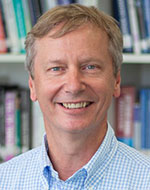 Bio: Gerhard P. Fettweis is a Vodafone Chair Professor at TU Dresden since 1994 and the founding director of the Barkhausen Institute since 2018. He earned his Ph.D. under H. Meyr from RWTH Aachen in 1990. After being a postdoc at IBM Research, San Jose, CA, he moved to TCSI Inc., Berkeley, CA. He coordinates the 5G Lab Germany. In 2019 he was elected into the DFG Senate. His research focuses on wireless transmission and chip design for wireless/IoT platforms, with 20 companies from Asia/Europe/US sponsoring his research. He also serves on the board of National Instruments Corp, and advises other companies.
Bio: Gerhard P. Fettweis is a Vodafone Chair Professor at TU Dresden since 1994 and the founding director of the Barkhausen Institute since 2018. He earned his Ph.D. under H. Meyr from RWTH Aachen in 1990. After being a postdoc at IBM Research, San Jose, CA, he moved to TCSI Inc., Berkeley, CA. He coordinates the 5G Lab Germany. In 2019 he was elected into the DFG Senate. His research focuses on wireless transmission and chip design for wireless/IoT platforms, with 20 companies from Asia/Europe/US sponsoring his research. He also serves on the board of National Instruments Corp, and advises other companies.
Gerhard is a member of the German Academy of Sciences (Leopoldina), the German Academy of Engineering (acatech), and received multiple IEEE recognitions as well as the VDE ring of honor and the Semi Europe award. In Dresden, his team has spun out nineteen start-ups, and set up funded projects in volume of close to EUR 1/2 billion.
Amitabha (Amitava) Ghosh, Nokia Strategy and Technology (12 APR, 08:30 CST)
Title: On the Path to 6G: Industry Alignment and Collaboration Is Key to Bring It to Life
Abstract: There is still a lot of innovation to be done in 5G with the 5G-Advanced standards pipeline, but that hasn’t prevented researchers around the world to start investigating 6G, which is expected to be commercially available in the 2030 timeframe. Nokia and Nokia Bell Labs have identified six major technologies that we envision will be vital components of future 6G networks.. In this talk, we will share Nokia’s 6G vision and these six technologies as well as discuss how that vision aligns with the wider industry view. Next, we will talk about the Next G Alliance, illustrating the importance of industry collaboration in shaping 6G. The NextG Alliance has set six audacious goal that aim to put North America at the forefront of developing a global 6G technology. Finally, we will demonstrate how we are engaging with NYU to drive Brooklyn 6G summit, a flagship event where industry, academia, government and regulatory bodies come together.
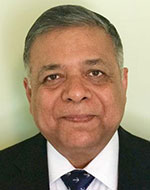 Bio: Amitabha (Amitava) Ghosh (F’15) is a Nokia Fellow and works at Nokia Standards and Strategy. He joined Motorola in 1990 after receiving his Ph.D in Electrical Engineering from Southern Methodist University, Dallas. Since joining Motorola he worked on multiple wireless technologies starting from IS-95, cdma-2000, 1xEV-DV/1XTREME, 1xEV-DO, UMTS, HSPA, 802.16e/WiMAX and 3GPP LTE. He has 60 issued patents, has written multiple book chapters and has authored numerous external and internal technical papers. He is currently working on 5G Evolution and 6G technologies. Recently, he was elected chair of the NextGA (US 6G initiative) National Roadmap Working Group. His research interests are in the area of digital communications, signal processing and wireless communications. He is the recipient of 2016 IEEE Stephen O. Rice and 2017 Neal Shephard prize, member of IEEE Access editorial board and co-author of the books titled “Essentials of LTE and LTE-A” and “5G Enabled Industrial IoT Network”.
Bio: Amitabha (Amitava) Ghosh (F’15) is a Nokia Fellow and works at Nokia Standards and Strategy. He joined Motorola in 1990 after receiving his Ph.D in Electrical Engineering from Southern Methodist University, Dallas. Since joining Motorola he worked on multiple wireless technologies starting from IS-95, cdma-2000, 1xEV-DV/1XTREME, 1xEV-DO, UMTS, HSPA, 802.16e/WiMAX and 3GPP LTE. He has 60 issued patents, has written multiple book chapters and has authored numerous external and internal technical papers. He is currently working on 5G Evolution and 6G technologies. Recently, he was elected chair of the NextGA (US 6G initiative) National Roadmap Working Group. His research interests are in the area of digital communications, signal processing and wireless communications. He is the recipient of 2016 IEEE Stephen O. Rice and 2017 Neal Shephard prize, member of IEEE Access editorial board and co-author of the books titled “Essentials of LTE and LTE-A” and “5G Enabled Industrial IoT Network”.
KAILASH NARAYANAN, SVP AND PRESIDENT, COMMUNICATIONS SOLUTIONS GROUP, KEYSIGHT TECHNOLOGIES (13 Apr, 11:45 CST)
Title: 3 Drivers of Network Transformation: Delivering on the 5G and 6G Vision
Abstract: The wireless business is undergoing a major transformation as key vertical industries extend their connectivity and digitization initiatives. Three pivotal trends from late 2021 and early 2022 illustrate the magnitude of what we are facing. First, in March 3GPP will begin work on Release 18. This will be the first NR release to be designated “advanced,” and it will support more device types and use cases. Second, the trend to virtualize networks is causing major changes in how wired and wireless networking are orchestrated, as well as disrupting business models. Finally, as we near the end of the third year of 5G deployment, aligning on the next generation (6G) has never been so visible and critical. These three trends illustrate how the next phase of 5G will not only transform the second half of this decade, but also how we as an industry will be realizing the 6G vision.
Bio: Kailash Narayanan is senior vice president, Keysight, and president of Keysight’s Communications Solutions Group (CSG).
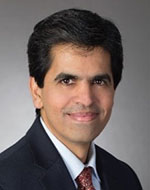 Narayanan leads the $3.3+ billion global business that addresses the end-to-end communications industry, including wireless and wireline segments, as well as aerospace defense. With more than 3,000 employees worldwide, CSG focuses on enabling customers’ innovations to connect and secure the world. The team has made significant contributions to accelerate technology adoptions of 5G, 400/800G, electromagnetic spectrum operations, and space and satellite modernization.
Narayanan leads the $3.3+ billion global business that addresses the end-to-end communications industry, including wireless and wireline segments, as well as aerospace defense. With more than 3,000 employees worldwide, CSG focuses on enabling customers’ innovations to connect and secure the world. The team has made significant contributions to accelerate technology adoptions of 5G, 400/800G, electromagnetic spectrum operations, and space and satellite modernization.
In his previous role, Narayanan served as president of Keysight’s $2.2+ billion Commercial Communications business, where he led Keysight’s wireless and wireline test programs and drove significant expansion in the 5G program. His team focused on delivering software-centric solutions to enable next-generation communication systems and applications.
Narayanan developed a broad set of executive connections across the industry and has been a champion of Keysight’s outside-in approach and commitment to customer-centricity, driving external partnerships and enabling customer innovation.
Narayanan has a 20+ year tenure with Hewlett-Packard/Agilent/Keysight. He has held leadership positions and has significant experience across multiple functions especially in R&D (15 years) and manufacturing (3 years). He has been part of multiple businesses spanning wireline backhaul, base stations, signal sources, wireless handsets, and fiber optics.
Narayanan has authored articles in leading industry literature including Microwave Journal and has spoken at many industry events.
He holds an MS degree in Electrical Engineering and Computer Science from the University of Illinois Chicago and an MBA from Walden University.
JOHN E. SMEE, SENIOR VICE PRESIDENT OF ENGINEERING AT QUALCOMM TECHNOLOGIES INC. (11 Apr, 11:00 CST)
Title: Advancing 5G Technology Innovations into the 6G Era
Abstract: Today, 5G is being widely deployed across all regions of the world, and its technology evolution continues with 5G Advanced in 3GPP Release 18 and beyond. 5G Advanced marks the second phase of 5G technology evolution and it is bringing a new wave of wireless innovations that will fully deliver on the 5G promise. At the same time, the 6G vision is starting to emerge, and it will become the new wireless platform for 2030 and beyond. To prepare for it, we are conducting advanced wireless research that will bring disruptive innovations, pushing technology boundaries to enable new and enhanced user experiences. Join this keynote to hear more about what new technologies are coming with 5G Advanced, the early vision for 6G, and the key innovations that will enable our future.
 Bio: John Smee is Senior VP of Engineering and Head of Wireless Research at Qualcomm, where he oversees all 5G/6G and Wi-Fi R&D projects including systems design, standards contributions, and advanced radio, hardware, and software research testbeds and technology trials with industry partners. He joined Qualcomm in 2000, holds over 175 U.S. Patents, and has focused on the innovation and commercial launches of wireless communications across 5G NR, 4G LTE, 3G CDMA, and IEEE 802.11. He also leads Qualcomm’s companywide academic collaboration program across technologies including wireless, semiconductor, automotive, multimedia, security, and machine learning. He received his Ph.D. in electrical engineering from Princeton University and holds an M.A. from Princeton and an M.Sc. and B.Sc. from Queen's University.
Bio: John Smee is Senior VP of Engineering and Head of Wireless Research at Qualcomm, where he oversees all 5G/6G and Wi-Fi R&D projects including systems design, standards contributions, and advanced radio, hardware, and software research testbeds and technology trials with industry partners. He joined Qualcomm in 2000, holds over 175 U.S. Patents, and has focused on the innovation and commercial launches of wireless communications across 5G NR, 4G LTE, 3G CDMA, and IEEE 802.11. He also leads Qualcomm’s companywide academic collaboration program across technologies including wireless, semiconductor, automotive, multimedia, security, and machine learning. He received his Ph.D. in electrical engineering from Princeton University and holds an M.A. from Princeton and an M.Sc. and B.Sc. from Queen's University.
Eric Starkloff, President and Chief Executive Officer, NI (12 Apr, 11:45 CST)
Title: Commercializing New Spectrum at mmWave and Beyond
Abstract: Although each generation in wireless technologies often introduces enhanced capabilities, the broad adoption of any new technology requires both technical and business viability. For 5G, solving for technical challenges such as path loss and radio front-end efficiency have lead to massive innovations in network design, semiconductor packaging, and test technology. Despite being able to effectively overcome these hurdles, we currently find ourselves dependent on market forces that will ultimately drive 5G adoption. The impact of the COVID-19 pandemic, for instance, has significantly impacted the adoption timeline of sub-6 GHz and mmWave 5G. Although these factors have deployed mmWave adoption in the short term, they raise important questions around long term use of spectrum above 6 GHz. In this session, we'll explore lessons learned from 5G deployments and explore potential applications, challenges, and opportunities that lie in 6G and beyond.
 Bio: Eric Starkloff is an advocate for the profound impact engineering has on society and the critical role technology plays in serving the public interest. As president, chief executive officer, and a member of the NI board of directors, he’s responsible for accelerating NI’s vision to drive long-term growth and innovation.
Bio: Eric Starkloff is an advocate for the profound impact engineering has on society and the critical role technology plays in serving the public interest. As president, chief executive officer, and a member of the NI board of directors, he’s responsible for accelerating NI’s vision to drive long-term growth and innovation.
Eric began his career at NI as an application engineer and, for more than two decades, has been instrumental in defining and implementing the company’s strategic direction. His leadership is focused on delivering results to NI’s key stakeholders through a strategy that’s built on disruptive technology and informed by customer needs to get accessible technology to market faster.
A deep believer in the importance of diversity in engineering and STEM education, Eric first discovered his passion to Engineer Ambitiously in elementary school—building a wind tunnel to test model airplane designs and learning to code so he could write choose-your-own-adventure stories on his first computer. He has since dedicated time to mentoring the future generation of engineers and has served on advisory boards for the Bradley Department of Electrical and Computer Engineering at Virginia Tech and the Wireless Networking and Communication Group at The University of Texas at Austin. He’s also a founding member of Urban Roots, an Austin-based sustainable agriculture program that transforms the lives of young people.
"Our customers are at the forefront of engineering and technology. Together, we’re taking a different approach to how we engineer the world, helping customers be more competitive as they take on the complex challenges shaping humanity."
LI TIAN, Head of Standards Strategy Department, ZTE Corporation (11 Apr, 08:30 CST)
Title: When Metaverse Meets Carbon Neutrality
Abstract: Metaverse is regarded as the future concept of virtual society that can be interacted with reality. A generalized metaverse may be recognized as the future social formation, although there is not yet a clear and unified definition at this early stage. This talk will focus on something rather clear in terms of the underlying basis of the metaverse, including 5G/6G based networking infrastructure, XR/AI based digital interaction, blockchain based economic framework, as well as the continuous evolution of those technologies to eventually match the application needs of the metaverse. Metaverse will intensify the digitization of personal activities, industrial activities, and the entire society, along with the impact on energy consumption and carbon emissions in either a positive or negative manner. Therefore, it is also worth thinking of how to meet the goal of carbon peak and carbon neutrality and to achieve sustainable development towards the metaverse era.
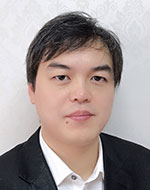 Bio: Dr. Li Tian is currently the Head of Standards Strategy Department of ZTE Corporation. He is actively involved in various global standardization organizations including 3GPP, ITU, IEEE. His research interests are in the field of 5G and beyond radio access technology, and his team contributed significantly to advanced technologies like AI/ML, future networks, video coding, automobile electronics, network security, etc. He is the first author of a book and contributed to multiple book chapters, with over 50 academic papers published and over 50 patents held globally. Li served as the co-chair of the IWCMC2020 workshop and keynote chair of WCNC2021, he also served as the rapporteur for several 3GPP work items.
Bio: Dr. Li Tian is currently the Head of Standards Strategy Department of ZTE Corporation. He is actively involved in various global standardization organizations including 3GPP, ITU, IEEE. His research interests are in the field of 5G and beyond radio access technology, and his team contributed significantly to advanced technologies like AI/ML, future networks, video coding, automobile electronics, network security, etc. He is the first author of a book and contributed to multiple book chapters, with over 50 academic papers published and over 50 patents held globally. Li served as the co-chair of the IWCMC2020 workshop and keynote chair of WCNC2021, he also served as the rapporteur for several 3GPP work items.
GENG WU, head of Wireless Standards and Technologies, intel corporation (12 Apr, 11:00 CST)
Title: 6G Cloud-native and AI-native Networks
Abstract: 6G is expected to bridge the physical and virtual worlds and bring technical improvements to energy efficiency, security, and network resilience. More specifically, 6G systems will integrate computing, communications, and data storage and access functions. 6G network architecture is expected to enable scalable distribution of computing and intelligence workloads, with the support of micro-services across devices, network edge, and cloud. A next-generation programmable optical and wireless transport network infrastructure will be developed and deployed to support 6G systems. This talk provides an overview of 6G technology trends, design objectives, and service requirements, enabling technologies, cloud-native and AI-native design considerations, and what these new fundamental capabilities are expected to bring to the next generation systems.
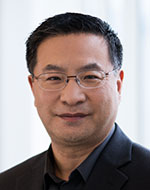 Bio: Dr. Geng Wu is an Intel Fellow and head of Intel Wireless Standards and Technologies. He currently leads Intel’s 6th generation (6G) wireless standards development and ecosystem collaboration and serves as a director of the board at IOWN Global Forum, MulteFire Alliance, and Automotive Edge Computing Consortium. His current research interests include mobile computing and communication infrastructure for artificial intelligence, and next-generation air interface and radio access network architecture designs.
Bio: Dr. Geng Wu is an Intel Fellow and head of Intel Wireless Standards and Technologies. He currently leads Intel’s 6th generation (6G) wireless standards development and ecosystem collaboration and serves as a director of the board at IOWN Global Forum, MulteFire Alliance, and Automotive Edge Computing Consortium. His current research interests include mobile computing and communication infrastructure for artificial intelligence, and next-generation air interface and radio access network architecture designs.
Wu has had over 30 years of research and development experience in the wireless industry, and has contributed extensively to global 2G CDMA, 3G 1xRTT, UMTS, HSPA, and 4G WiMAX, LTE radio interface, and network architecture design and development. Wu holds more than 40 issued US patents with many patents pending. He has numerous research publications in the field of mobile wireless communications and networking. Prior to Intel, Wu served as director of wireless architecture and standards at Nortel Networks, responsible for system performance, standards research, and technology development in 3GPP2, 3GPP, IEEE, and WiMAX.









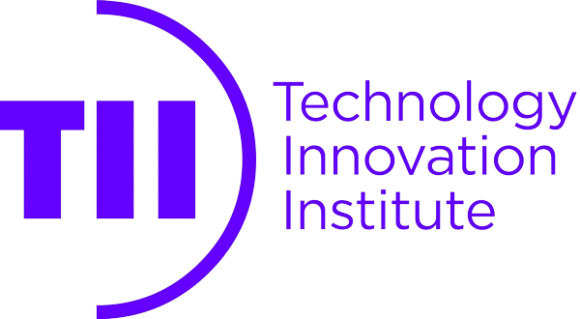



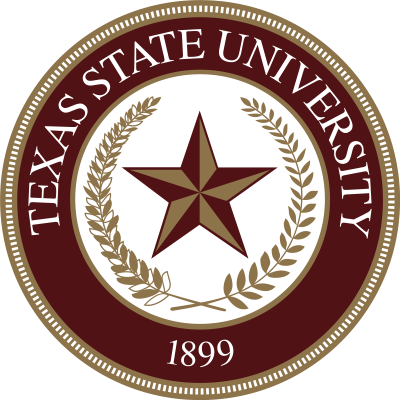
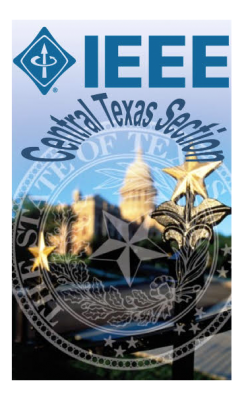
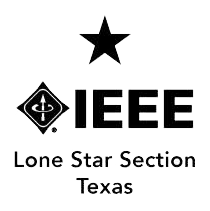
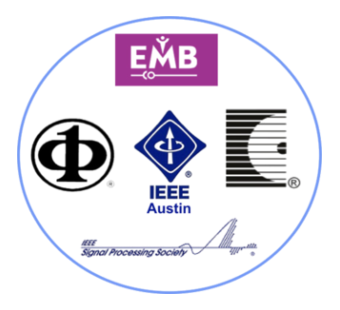

.png%3Fitok=HPhdjq1T)
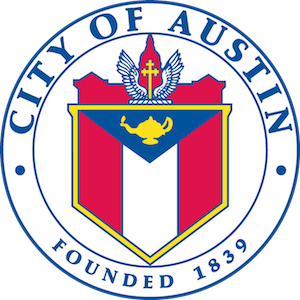
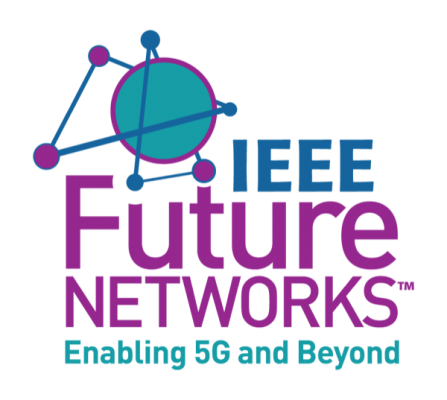
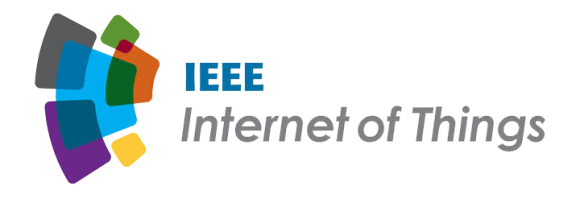
_0.png%3Fitok=n0ncuwzS)